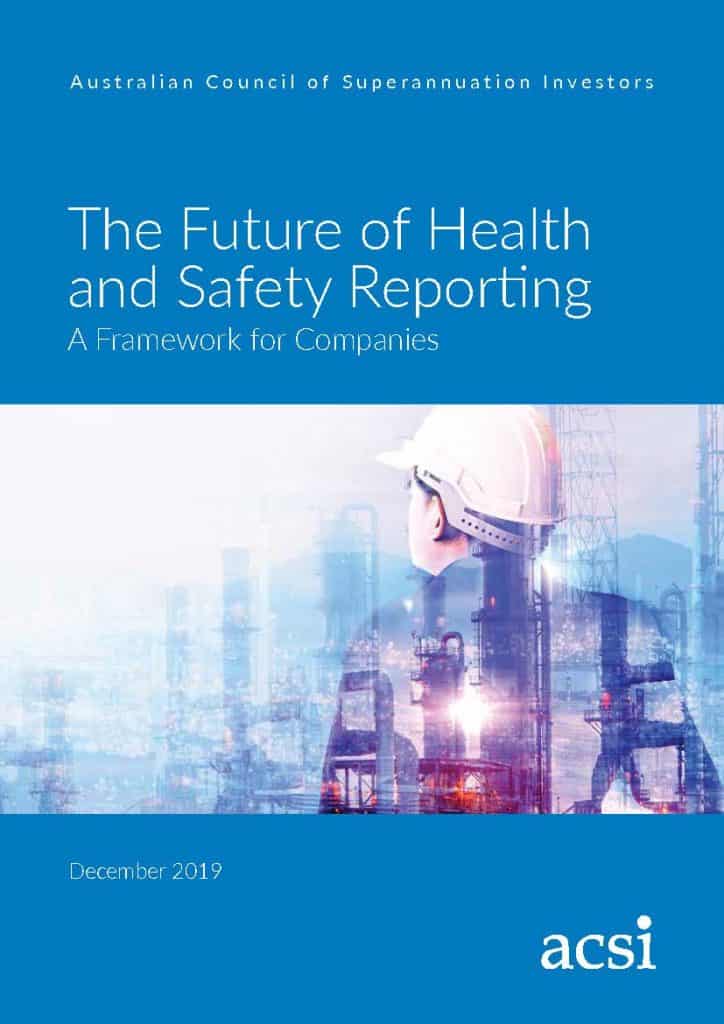So, Victoria now has Industrial Manslaughter laws. Now what? Within days of the activation of these laws a worker died at the Thales worksite in Bendigo. This location is covered by the Federal Work Health and Safety laws, but this has not stopped social media from mentioning Industrial Manslaughter. It seems now that every work-related death will be assessed through the IM lens. It may be that the threat of jail should always have been the starting point for occupational health and safety (OHS) penalties and investigations but initial responses to the IM laws have been mixed, and some seem to be more interested in what, in the past, has been a sideline to the IM discussion – deaths, in work vehicles, suicides and industrial illness.
Category: transparency
More on David Michaels’ book – “statistics are people with the tears wiped away”
I found time to read the rest of David Michaels’ latest book “The Triumph of Doubt“. It was loaded with information that is directly relevant to the Australian occupational health and safety (OHS) sector but more about the manipulation of facts and the stealth of lobbyists and influencers than on the hazards themselves. Here’s my take on some of his thoughts.
Two Australian case studies that would not have been out of place in a book like Michaels’, or even an Australian supplement to his book, were quad bikes and workplace mental health. Quad bike safety is the better fit with Michaels’ approach as many of the techniques of Zellner and Dynamic Research Incorporated, and the strategies of international all-terrain vehicle manufacturers, reflect the those strategies in the book.
David Michaels writes about chemicals, primarily, but many of his words hint that similar “doubt scientists” could be already in the psychological health and wellness sector, except these scientists are less about reacting to litigation and legislation than supporting and strengthening an industry in anticipation of increased regulatory scrutiny. “Pre-action”, perhaps?
The Triumph of Doubt is essential reading
When a former head of a national occupational health and safety (OHS) regulator writes a book, it may be a curiosity (and it is rare). But when the writer is the former Assistant Secretary of Labor for the US Occupational Safety and Health Administration, the book becomes interesting. When the book is called “The Triumph of Doubt – Dark Money and the Science of Deception“, it becomes a must-read. SafetyAtWorkBlog dips into David Michaels‘ new book (as I only received it yesterday) and finds treasure.
This is not the first time that Michaels has written about Doubt and how whole industries have developed to create, market and exploit Doubt for the benefit of the Establishment. However, the new book is super-topical in this time of “Fake News” and blatant disregard of science and scientists.
Ethics, safety and fingertips

Last week the Australian Institute of Health and Safety (AIHS) launched its Body of Knowledge Chapter on Ethics in Melbourne to a small group of occupational health and safety (OHS) professionals. Participants were asked to outline an ethical challenge they had faced as OHS professionals.
In that same week, WorkSafe Victoria issued a media release that showed a poor follow-through by a business on advice from an OHS professional.
Avoid government interference, get in first

In occupational health and safety (OHS), there is evidence and then there is evidence. Regardless of the type of evidence, there is not as much as there should be. Many companies and organisations in Australia are required to publicly release annual reports that identify their financial status. Increasingly non-financial criteria, like OHS performance, is being included in these reports but why isn’t this mandatory and why isn’t it of a consistent type? Late on 2019, the Australian Council of Superannuation Investors (ACSI) looked at the issue of OHS reporting, with some assistance from EY.
ACSI’s CEO, Louise Davidson illustrates the problem in her Foreword to the report:
“Almost one third of ASX200 companies provide their investors and other stakeholders no information on health and safety performance. For the companies that do provide some information, the disclosure often provides no insight into how many severe incidents occurred…….”
page 6
OHS needs to ride the ESG wave

The current Environmental, Social and Governance (ESG) movement can be seen as the latest iteration of companies and business owners reflecting on the broader purposes of running a business. An earlier manifestation of this reflection was Corporate Social Responsibility (CSR). ESG and CSR are similar perspectives from different times but with a fundamental continuity.
Occupational health and safety (OHS) is integral to CSR/ESG/Sustainability considerations but is often overlooked or considered as a business add-on, a situation that has been allowed to persist by the OHS profession, Regulators and others over many decades.
Annual Reports are not as transparent on OHS performance as they could be
Around four or five years ago, occupational health and safety (OHS) reporting in Corporate Annual Reports was a hot topic as Australian research had indicated that Annual Reports were not revealing sufficient, or useful, OHS data. Also awards were being presented for the best OHS reporting in Annual Reports. SafetyAtWorkBlog has looked at a sample of the reports released by the Victorian Government over the last fortnight to see what OHS information is available.
Two major keywords were used to search the Annual Reports – “Safe” and “Well”. These words form the stemS of other search terms such as “safety” and “wellbeing” or “wellness”. Each of the word responses were looked at for a focus on workplace or work-related activity. Although public safety may have an increasing OHS context, public safety, and a range of other “safeties”, were not included.
Some Annual Reports were okay, others? Egh! But what is clear is that there is no excuse.
